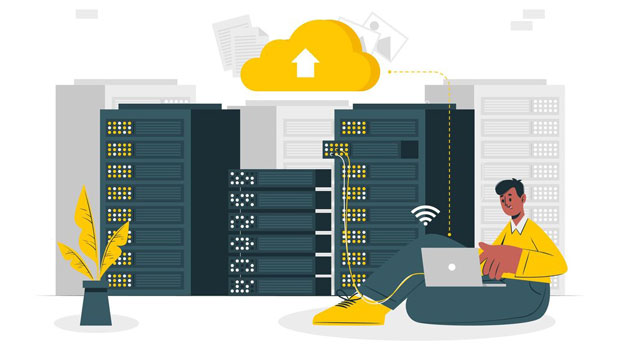When deciding between SOCKS5 and HTTP proxies, two tools that often come into play are PYPROXY and Proxidize. Choosing the right proxy service can make a significant impact on the speed, security, and functionality of your online activities. sock s5 proxies, known for their versatility, are often recommended for more secure, unrestricted, and high-performance tasks. On the other hand, HTTP proxies, typically faster but less secure, are suited for simpler web browsing and specific website tasks. This article will explore the differences, advantages, and ideal use cases for PyProxy and Proxidize, helping users determine which service fits their needs best. Understanding SOCKS5 and HTTP ProxiesBefore diving into the specific tools, it's crucial to understand the difference between SOCKS5 and HTTP proxies.- socks5 proxy: SOCKS5 is the latest version of the SOCKS protocol, widely appreciated for its speed and versatility. It routes traffic between a client and server at a low level, meaning it doesn't manipulate or modify data packets. It supports any type of internet protocol (HTTP, FTP, SMTP, etc.), making it ideal for a variety of uses, such as gaming, torrenting, and secure browsing. SOCKS5 proxies offer enhanced security, including authentication, which is useful for maintaining privacy and preventing unauthorized access.- HTTP Proxy: HTTP proxies operate at a higher level of the network stack, specifically handling HTTP and HTTPS traffic. These proxies are typically faster than SOCKS5, but they only support web-based communication, limiting their use for browsing websites and interacting with web services. While HTTP proxies can be useful for tasks like content filtering, geo-blocking bypass, and web scraping, they generally offer less privacy and security than SOCKS5 proxies. When to Use PyProxyPyProxy is a specialized service that primarily supports SOCKS5 proxies. It is a versatile and secure tool designed for a wide range of internet applications, such as gaming, anonymous browsing, and torrenting.- Privacy and Security: If maintaining privacy and anonymity is crucial for your activities, PyProxy is a superior choice. SOCKS5 proxies offered by PyProxy do not interfere with your data, meaning there's no need to worry about potential data leaks or modifications. PyProxy also provides strong authentication mechanisms that prevent unauthorized access, ensuring better security.- Versatile Use Cases: PyProxy supports a variety of protocols beyond HTTP, such as FTP and SMTP. This versatility allows it to handle different types of traffic, making it the go-to proxy service for more complex tasks, such as bypassing firewalls, anonymous browsing, or engaging in online gaming and torrenting.- Bypassing Geo-Restrictions: PyProxy is often the best choice when you need to bypass geo-restrictions and access content from specific regions. Its support for multiple protocols ensures that you can route all types of traffic securely through the proxy.- Stable Performance: The SOCKS5 proxies offered by PyProxy are generally known for their high reliability and stability, which is essential for tasks like gaming or streaming where low latency and uninterrupted connections are needed. When to Use ProxidizeProxidize is a powerful proxy service focused primarily on HTTP proxies. It is best suited for specific use cases that do not require the same level of security or versatility as PyProxy but demand higher speed and simplicity.- Speed and Efficiency: Proxidize typically provides faster speeds for web browsing because it handles HTTP traffic more efficiently than SOCKS5 proxies. If your primary need is to access websites quickly without needing to support other internet protocols, Proxidize is a more efficient choice. It's ideal for tasks that require a straightforward browsing experience, such as unblocking region-restricted content or using online services.- Web Scraping and Content Filtering: Proxidize is a popular choice for web scraping projects, where users need to extract data from multiple websites. Since HTTP proxies work specifically with web traffic, they are generally faster and easier to manage in such scenarios. Additionally, Proxidize can be used for content filtering or bypassing simple geo-restrictions.- Less Complexity for Simple Web Tasks: If your goal is to perform basic tasks like accessing news websites, using search engines, or engaging in simple social media interactions, Proxidize might be all you need. It's less complex and easier to set up for such uses compared to a more versatile SOCKS5 proxy like PyProxy.- Lower Cost: In some cases, Proxidize offers a more cost-effective solution for users whose activities are confined to HTTP traffic. While SOCKS5 proxies tend to be pricier due to their advanced features and security, Proxidize focuses on the needs of users who don’t require the full spectrum of proxy capabilities. Key Differences Between PyProxy and ProxidizeHere is a summary of the differences between PyProxy and Proxidize to help you make an informed decision:- Protocol Support: PyProxy supports a wide range of protocols (including HTTP, FTP, and SMTP), while Proxidize focuses primarily on HTTP traffic. If you need to handle various protocols, PyProxy is the more versatile choice. - Security: PyProxy offers enhanced security with SOCKS5 proxies, providing more privacy and authentication features. Proxidize, while fast, offers less security compared to SOCKS5.- Use Cases: PyProxy excels in scenarios requiring anonymity, security, and versatility—such as gaming, torrenting, and bypassing complex geo-blocking. In contrast, Proxidize is better suited for users who need speed and efficiency for simple web browsing and content scraping.- Performance: Proxidize typically provides faster speeds for HTTP traffic, making it ideal for web scraping or quick browsing tasks. PyProxy, however, maintains stability and low latency for more demanding tasks.- Cost: Proxidize can be more cost-effective for simple tasks, while PyProxy tends to be more expensive due to its advanced features and higher security levels. Choosing Between PyProxy and Proxidize: Which One Fits Your Needs?Choosing the right proxy service depends entirely on your specific needs. Here are some factors to consider when making your decision:- For Privacy and Anonymity: If your main concern is security, privacy, or anonymity—especially in high-risk online environments—PyProxy is the better choice. Its SOCKS5 proxies offer superior protection and versatility.- For Web Scraping and Fast Browsing: If you need to scrape data from websites, unblock content, or simply browse the web with minimal hassle, Proxidize is likely the better solution. It's designed for speed and efficiency, making it a great fit for straightforward tasks.- For Gaming or Streaming: When it comes to online gaming or streaming, PyProxy’s stable and low-latency SOCKS5 proxies offer a more reliable solution, ensuring uninterrupted experiences.- For Cost-Effective Simple Tasks: If you're on a budget and your activities are limited to basic browsing or accessing specific websites, Proxidize is more cost-effective without sacrificing performance. ConclusionBoth PyProxy and Proxidize are excellent tools for managing proxies, but their use cases differ significantly. PyProxy is the better choice for privacy-sensitive tasks, multi-protocol support, and high-performance activities. Meanwhile, Proxidize shines in simpler, speed-focused tasks like web scraping and browsing. Understanding your specific needs—whether it's enhanced security, speed, or cost-effectiveness—will guide you to the right choice. In many cases, using both tools in different scenarios may provide the most versatile and efficient approach to managing your online activities.
Sep 17, 2025



































































